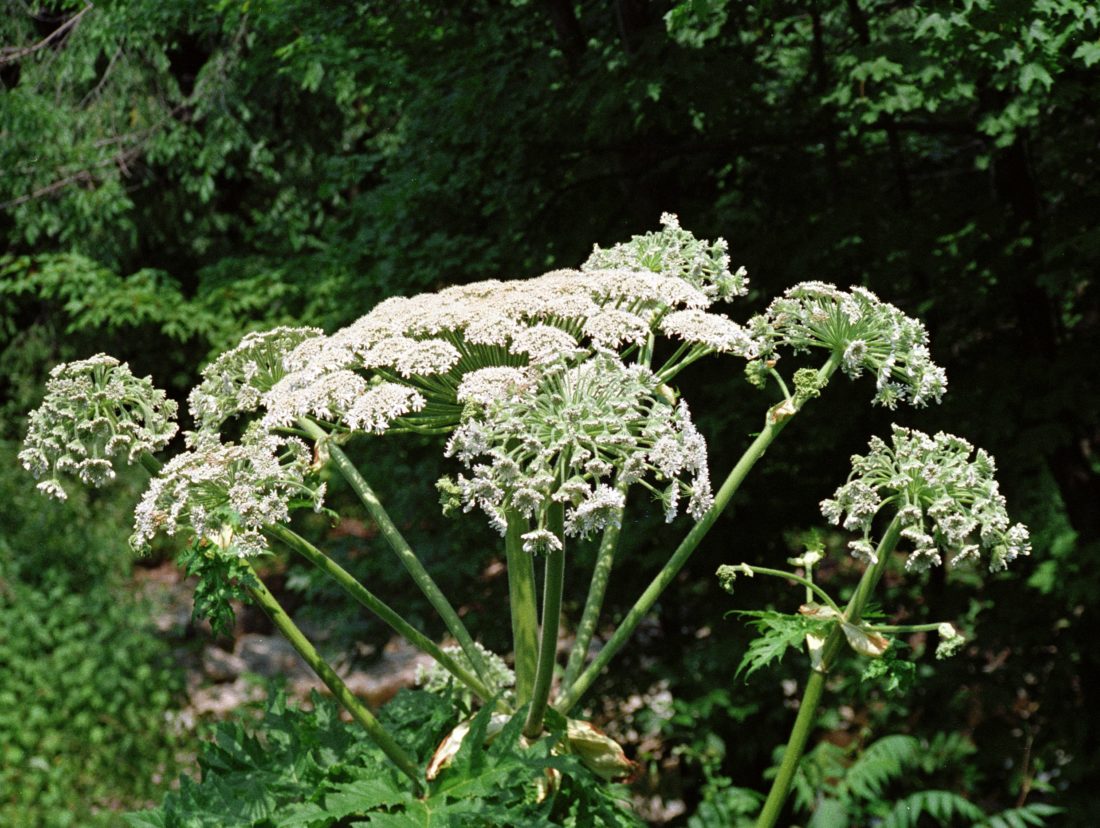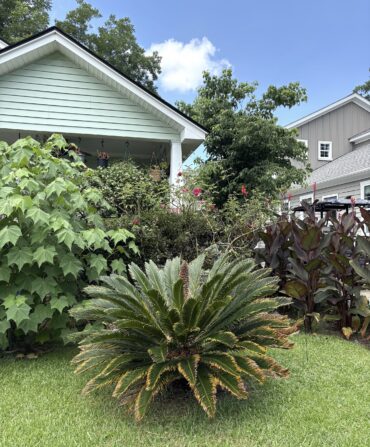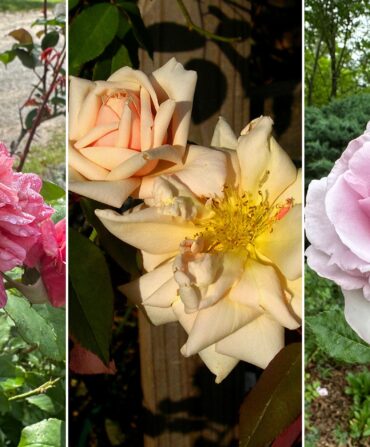It sounds like something out of a science fiction novel, but a giant invasive plant, so dangerous that it can cause third-degree burns and blindness, was found last week in Virginia. The Massey Herbarium at Virginia Tech confirmed the identity of the plant, known as giant hogweed, after a homeowner spotted a stand of it in Northern Virginia’s Clarke County, near the town of Berryville.
The Virginia Department of Transportation has also received unconfirmed reports of sightings from other locations in the state, and in 2016, hogweed was discovered (and later destroyed) in Caldwell County, North Carolina. “Now that there’s a confirmed sighting, we need to be on the lookout,” Ken Slack, a VDOT spokesman, told the Washington Post. “We have to make sure folks don’t get into it … don’t go after it like a weed.”

Photo: Photo courtesy of Mark Sutphin, Virginia Cooperative Extension
Extension agent Corey Childs with the giant hogweed found in Virginia’s Clarke County.
Giant hogweed can grow up to fifteen feet tall and has a clear, toxic sap that makes human skin and eyes dangerously sensitive to sunlight if it makes direct contact. Telltale signs of the plant are its height, white umbrella-shaped flower canopies, a green hairy stalk with purple splotches, and huge incised leaves that can grow up to five feet across. Native to Asia, giant hogweed has been in the United States for decades, primarily in the Northeast and Pacific Northwest. The Clarke County hogweed marks the first confirmed case in Virginia.
In a note on its Facebook page, Isle of Wight County, Virginia, said the plant “makes poison ivy look like a walk in the park.” Yikes. But Dr. Jordan Metzgar, curator of the Massey Herbarium, says you shouldn’t panic if you think you’ve spotted one. “The first thing to remember is that the odds are you haven’t found giant hogweed,” he says. The Clarke County hogweed was deliberately planted on the property decades ago as an ornamental addition, Metzgar says, and the plant doesn’t appear to have become widespread. And while multiple sightings have been reported across Virginia in the days since the initial hogweed media reports, no other specimens have yet been confirmed by state officials.
If you do think you spot giant hogweed, do not attempt to remove it yourself. Metzgar and other plant experts suggest first consulting online resources designed to help identify the plant, which can often be confused with cow parsnip or even the much smaller Queen Anne’s lace. (This online guide from the New York Department of Environmental Conservation provides an excellent visual reference.) If you still think you’ve got one of the dangerous plants on your hands, take several pictures of it—from a distance—and contact your local extension agent.
Mark Sutphin is the Virginia extension agent who identified the Clarke County hogweed last week. Since that report, he and other agents have been inundated by calls from residents. “There’s just a lot of concern right now,” Sutphin says. “And rightly so, because this plant can cause some significant health concerns. But right now, it’s not widespread.”
In addition to working overtime to wade through the spike in reports, Metzgar, Sutphin, and others in the Virginia horticultural community are just trying to keep up with the flood of attention they’ve received.
“We thought we had done well this spring when we got into the Roanoke newspaper for an exhibit we were having,” Metzgar says of the herbarium. “But then this happened. My parents live in Pennsylvania and saw me on the morning news. It’s been a crazy experience.”
A portion of this article first appeared in Garden & Gun’s Talk of the South newsletter. If you’d like to receive news and info from around the South each week, sign up for the newsletter here.








